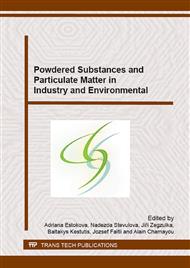p.182
p.188
p.197
p.205
p.213
p.221
p.228
p.234
p.240
Environmental Assessment of the Concrete Based on Blast Furnace Slag
Abstract:
The paper deals with the use of blast furnace slag in the production of plain concrete and with its impact on the elements of the environment. The finely ground granulated blast furnace slag with the weight of 10, 20, 30, 40, 50, 60, 80, 95 and 100 % was used as a substitute of Portland cement in ratio 1:1 of weight. The following properties were observed in all prepared experimental mixtures: consistency of concrete mixture, density of fresh concrete mixture, cube and prism strengths, water tightness, frost resistance and static modulus of elasticity. Subsequently, the life cycle assessment as well as the comparison of environmental impact of selected plain concretes by the LCA method was made. They were monitored total environmental impacts in terms of threats to soil, water, air and human health in order to select the most suitable alternative. The comparison of the reference mixture and mixture with 60% wt. of blast furnace slag showed that using secondary raw materials visibly decreased the impact in each category: Abiotic depletion of 56%; Acidification of 52%; Eutrophication of 56%; Global warming of 58%; Ozone layer depletion of 50%; Terrestrial ecotoxicity of 59%; Photochemical oxidation of 50%, Primary energy (non-renewable fossil) of 53% and of 58% for Human toxicity, Fresh water aquatic ecotoxicity and Marine aquatic ecotoxicity, respectively.
Info:
Periodical:
Pages:
213-220
Citation:
Online since:
October 2015
Authors:
Keywords:
Price:
Сopyright:
© 2016 Trans Tech Publications Ltd. All Rights Reserved
Share:
Citation:


